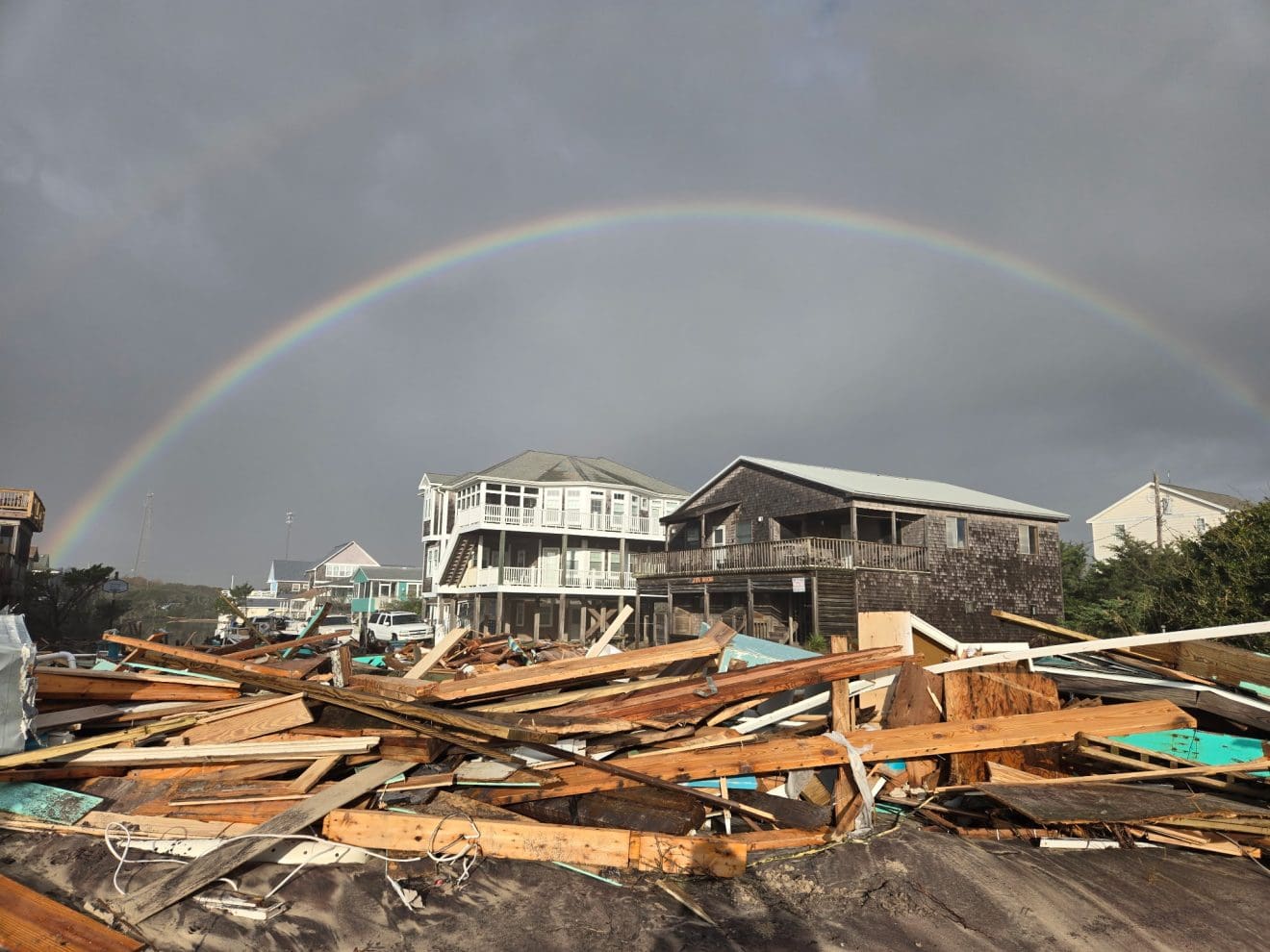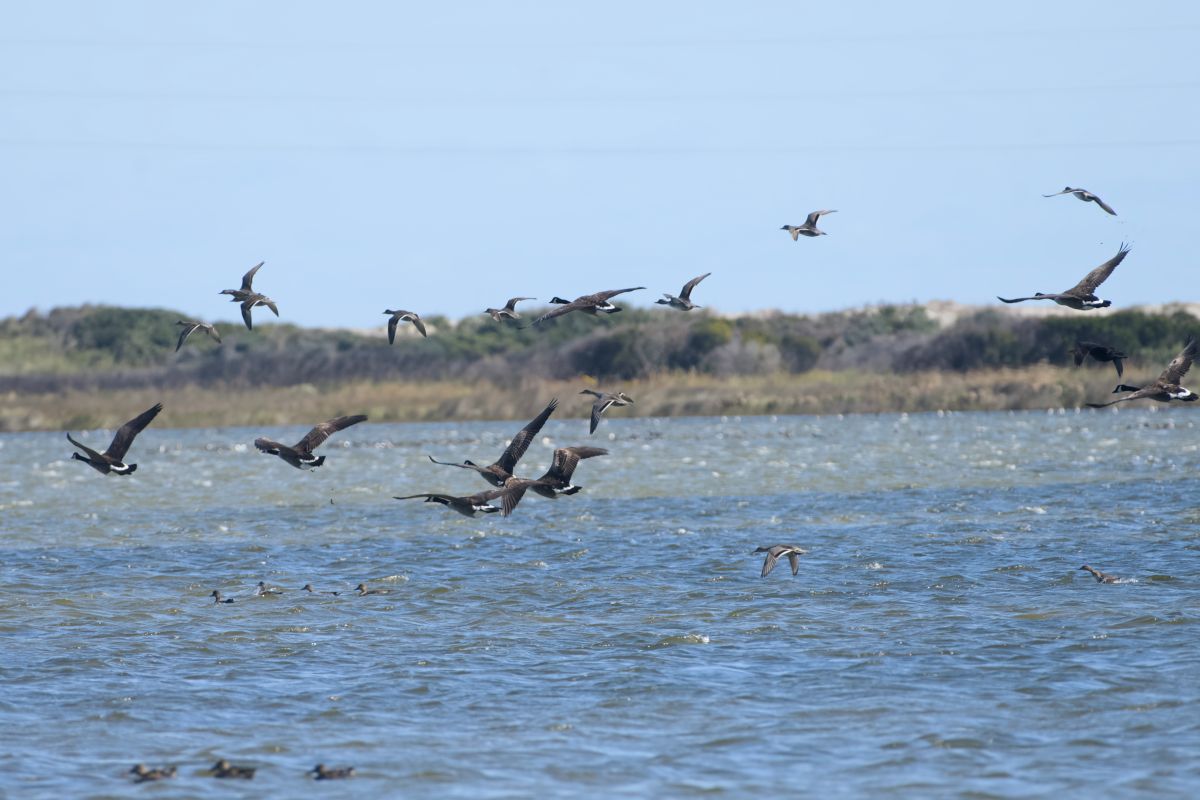
Guest commentary
To stimulate discussion and debate, Coastal Review welcomes differing viewpoints on topical coastal issues.
Over the past five years, North Carolina communities have endured storm after storm. From the estimated $16 billion of damage caused by the powerful forces of Hurricane Florence to excessive rainfall that engulfed mountain towns during Tropical Storm Fred to the lasting impacts from various unnamed storms, we’ve seen firsthand how flooding disasters are changing North Carolina and its communities.
Supporter Spotlight

Now, more than ever, new approaches are required to address the increasing rate and severity of extreme rain events in North Carolina to safeguard communities, ecosystems and local economies. One way to reduce these risks is to build flood resilience across the state, an effort that has proven to save $6 for every $1 spent pre-disaster.
North Carolina’s Department of Environmental Quality (DEQ) is developing the state’s first-ever Flood Resiliency Blueprint in collaboration with numerous stakeholders, including Environmental Defense Fund (EDF), conservation partners, agricultural organizations, business representatives and local governments. And we are thrilled to celebrate the release of DEQ’s draft plan, which was presented to the General Assembly on Jan. 23.
At the Joint Legislative Commission on Government Operations Hurricane Response and Recovery subcommittee, DEQ Secretary Elizabeth Biser envisioned that “five years from now, other states will be looking to North Carolina because our process lets communities get back to day to day living quicker after storm events.” The Blueprint is a big step forward, resulting in a massive statewide effort dedicated to building resilient communities equipped to reduce and manage flood risk and vulnerabilities.
What is the Flood Resiliency Blueprint?
In 2021, the North Carolina legislature provided funding and a directive for DEQ to develop North Carolina’s Flood Resiliency Blueprint in response to increasing flood risk. Since then, community leaders, government partners, technical experts and academics have worked together to advance this initiative, ultimately designed to help all North Carolinians make informed flood resilience planning decisions.
The Blueprint will compile all relevant resources and knowledge into one place, and once completed, will function as an online-decision support tool for state and local leaders. This dynamic tool will help establish a single standardized methodology for North Carolina’s flood planning and includes strategies specific to each of the state’s major river basins, including aspects of stormwater maintenance and holistic watershed management.
Supporter Spotlight
DEQ plans to also include components such as multi-scale modeling, scenario exploration systems, guidance documents and planning tools. Additionally, DEQ will continue to update and refine the Blueprint draft by referencing advisory group feedback and community engagement, in addition to other resources.
How will the blueprint support NC communities?
One goal of the Blueprint is to help state and local leaders determine where to invest in flood resilience. The Blueprint will give leaders a better understanding of which communities are most vulnerable to flood risk and who needs financial support and technical assistance.
To achieve this, DEQ will work with communities across five river basins in 2024. They will host information exchanges in each basin to allow communities the opportunity to co-design an action strategy to reduce flood risk within their river basin.
Ahead of these exchanges, communities will have access to online tutorials and technical assistance to learn more about the Blueprint and how to use the platform. Additionally, the state legislature has pre-allocated nearly $100 million to DEQ to begin implementing projects upon completion of the Blueprint.
How to continue advancing the Flood Resiliency Blueprint
It is essential to get the Blueprint right. All levels of government need to work together on this – and we need to trust in science and look to our community leaders for guidance.
To support downstream communities, the Blueprint must be able to evaluate flooding at a watershed scale to understand how much water is coming down the river and where that water flows out of the river during a flood. When communities seek solutions to reduce their vulnerability to flooding, they should consider what the area’s watershed looks like and how solutions could impact different areas. It’s recommended to look in-town and upstream to ensure the most cost-effective solutions are grounded in science and achieve the resilience results a community needs. Meanwhile, we must also avoid selecting solutions that increase flooding impacts on a neighbor’s property or in towns downstream. The Blueprint could make all this possible, leading to wiser investments of public funds and better outcomes for residents.
Additionally, EDF encourages DEQ to continue prioritizing North Carolina’s communities in flood planning to align state resilience goals with local community needs. Community members need to understand the purpose of the Blueprint and have access to it so that they can help improve it. Ultimately, a fully built online decision support tool can help a community understand the trade-offs between various flood solutions.
EDF looks forward to working with DEQ to continue advancing this important initiative and build resilience for the beautiful state of North Carolina.
Opinions expressed by the authors are not necessarily those of Coastal Review or our publisher, the North Carolina Coastal Federation. See our guidelines for submitting guest columns.







